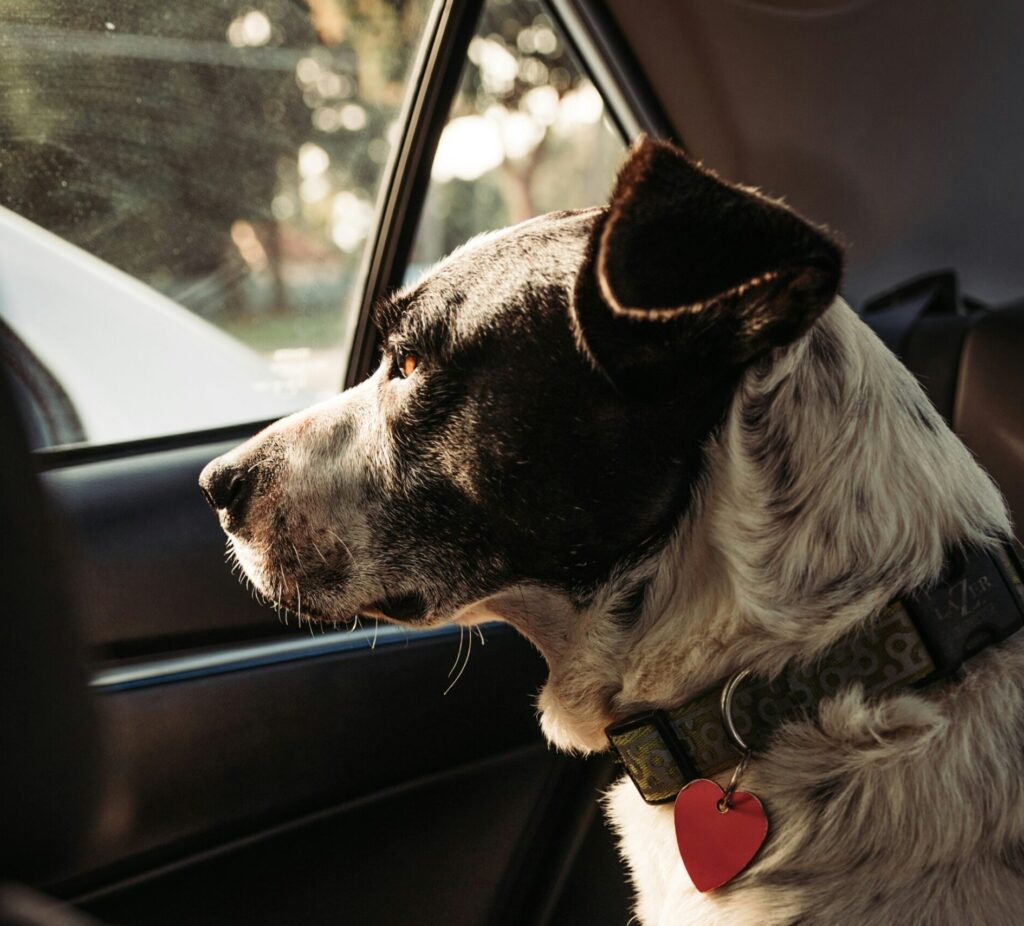
Spring is here and with it opportunities to spend more time outdoor with our canine companions.
Yay!
At Superhero Dogs, we understand that dogs are family and we find joy in including them in our activities, whether its one-on-one time at a dog friendly coffee shop, going to a neighbourhood market, for a hike together, or a family picnic.
For some dogs however, even getting into the car can be stressful. Some dogs find the car overstimulating, leading to over arousal and reactive behaviour towards things outside the car. Another concern could be that your dog gets car-sick, so that even taking them for routine vet visits adds another layer of stress. Fortunately at Superhero Dogs we have games based strategies that can help you address these challenges!
MAKING THE CAR A CALMER SPACE:
For many dogs, cars are predictors of exciting events, and so the first step is to help your dog see cars as non-events. A few ways to reduce excitement in cars are:
- With your vehicle park and not running, allow free access in and out of the car. Let your dog explore without any confinement. Scatter-feed some kibble or treats in the car, again without any sense of confinement. They should be able to get in and out freely.
- Make initial sessions short, slowly building up duration with your dog’s comfort level. If your dog is hesitant to get inside, start with scatter feeding around the car first.
- Once your dog is relaxed at this level, switch the engine on and repeat the above. Remember to go back to short sessions when you move to this level.
- Become less predictable. The next stage is to take your dog for short drives, sometimes not getting out of the car, or taking a little time before getting out. You can even read something. In this way dogs learn that car drives do not always lead to a destination. We call this DTR – Ditching the Routine
Through this process we can grow calmer behaviour in the car. For those barky dogs in cars, our Reactive Dog Course covers even more stress busting strategies and games to reduce reactivity towards triggers outside the car.
CAR SICKNESS :
The three main factors causing car sickness are:
- Physiological – what’s happening in the dog’s body (sensory input / anxiety). Dogs may not vomit, but other signs of car sickness are excessive lip licking / whining, drooling, yawning, shaking, listless or uneasiness
- Age-related – structures in the dog’s body (vestibular system) are not fully developed
- Psychological – how your dog feels during a car trip. Some dogs associate the car with being sick, so it can be a vicious cycle. (Nausea = stress = nausea)
Age and physiological related causes cannot be addressed through training. Tellington TTouch ear work is a gentle and effective way to reduce nausea and anxiety in the body. For more info on Ttouch for dogs and how to do the ear touches click here:
Some natural remedies also help dogs to cope, such as a spoonful of ginger given 20 to 30 minutes before the car ride. Lavender essential oil dabbed on to a cloth can also help ease car sickness.
Pheromones are another natural option, and have no side effects. These are products that mimic the natural appeasing pheromones produced by calm animals. They come in spray or as a wearable collar, and can get bought at your vet.
For extreme cases, consult with your vet for appropriate medications for dogs.
Below management strategies will support your dog through the process:
Dogs facing forward are less prone to feel sick than dogs looking outside windows. Contact us for help with crate training if you need. When your dog is in their travel crate, they will only have visual access from the front. Opening windows a couple of cm will help to balance the air pressure inside and outside of the car. Cooler cars are also better. Finally, limit your dog’s food consumption before travelling. Consider taking a break from car trips for a while as you work through the issues.
At Superhero Dogs, as certified trainers and qualified behaviour practitioners, we have many training games to deal with car related struggles. Contact us to join one of our training classes, or a private behaviour consultation at your home.